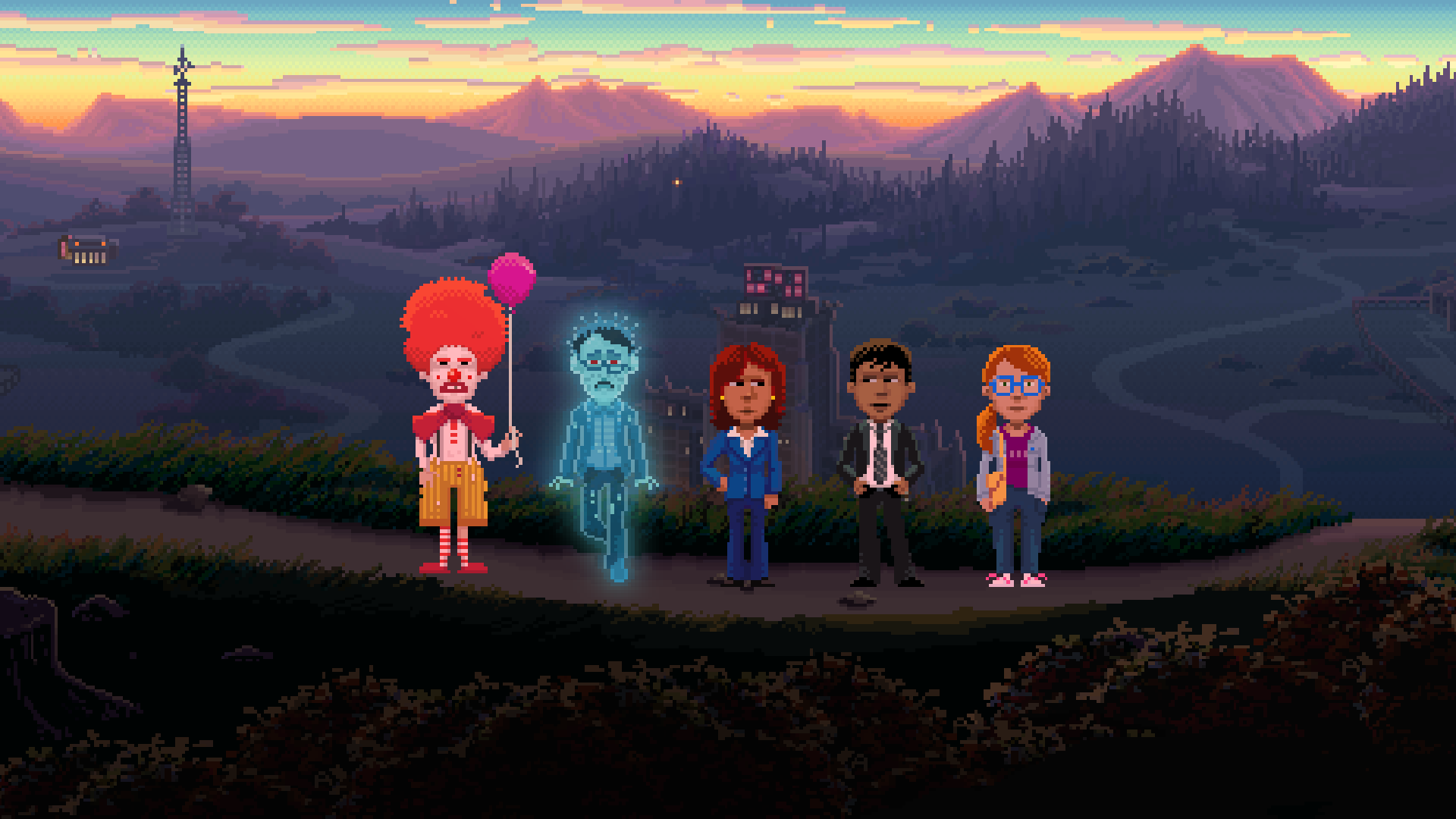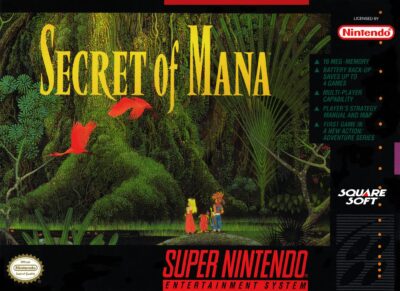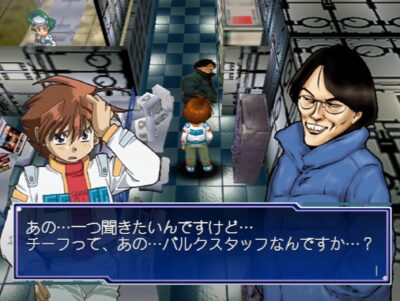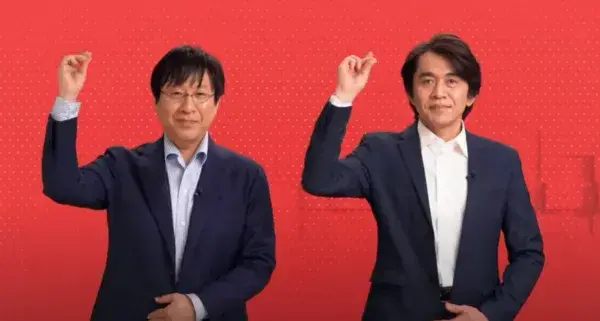
Popular culture shifts with trends and technology; video game genres are no different. Since the medium’s birth, innovations in technology and hardware have driven game development, and game genres have adapted to reflect these improvements: you only have to look at the earliest text-based RPGs and something like The Witcher 3 to see how far that genre’s come over the course of three decades.
As video games have evolved, however, some genres have quietly fallen by the wayside: other than the evergreen Super Mario series and its various spin-offs, platformers have all but disappeared from the mainstream since the 2000s – largely replaced by more modern genres, like first-person shooters and ever-more ambitious open-world action-RPGs.
Point-and-click adventures have similarly been confined to the past. But with the death of older genres came their rebirth at the hands of indie developers. Searching for platformers, point-and-click adventures, and 2D shooters on Steam or the Nintendo eShop unlocks a treasure chest of affordable and charming games.
Thanks to indie developers, then, genres long abandoned by triple-A studios still thrive. But why? We spoke to the minds behind a few popular retro-style indie games to find out.
Playing it safe?
One reason why older genres might appeal to indie developers is their comparatively small scale; where major developers might feel duty-bound to make ever-larger games with additional modes and content, their smaller counterparts are free to make more focused, intimate experiences.
That’s the opinion of Danelle and Oliver, admins for Indie Game Lover. “With a triple-A game, ideas and content can be stretched thin to pad out a twelve-hour experience,” Oliver suggests. “Features like multiplayer are included simply to justify that game’s full price.” Danelle adds that large studios can sometimes feel removed from the gaming community itself, with developers driven by “‘big bosses’ breathing down their necks to make ‘money-only choices’”.

Thimbleweed Park revived the LucasArts-style point-and-click adventure in fine style.
Retro genre indie games are occasionally backed by firms with deep pockets, as with Ori and the Blind Forest and its successor, Ori and the Will of the Wisps, both supported by Microsoft. But for the most part, larger studios have left the traditional 2D platformer alone.
For those studios, surrounded as they are by huge investments, external shareholders, and massive sales targets, taking the time to reinvent an older genre is simply too risky: why experiment when huge franchises such as Call of Duty continue to pull in the big bucks year after year?
Indie studios, by contrast, rely on other things to stand out: innovative gameplay mechanics, unique art styles, and engaging, offbeat storytelling. Where better to start than with older genres that aren’t dominating the current gaming landscape?
Adventure Time
Rem Michalski has created a number of point-and-click adventures under his Harvester Games banner: The Cat Lady, Downfall, and Lorelai were all created from Michalski home during his spare time. For Michalski, it’s the freedom to take creative risks that distinguishes the typical indie game from its triple-A counterpart.
“The best thing about being indie is not having to ‘play it safe’ [and] not trying to cater to everyone’s tastes but staying true to your vision,” he tells us. “And people dig that. There’s this feeling of not knowing what to expect when they get a game that’s not your usual ‘colour by numbers’ title, but a twisted child of a crazy artist’s imagination. The role of indie games is to stretch boundaries, to experiment and show players what’s on the other side.”
Michalski also adds: “I don’t know what it’s like to have people breathing down your neck, questioning everything you do.”

Rem Michalski’s The Cat Lady dealt with taboo themes rarely touched on by point-and-click adventures of the past.
Experimentation
For some of the developers we spoke to, that creative freedom is something money simply can’t buy. Killmonday Games’ Natalia Martinsson, for example, says that she wouldn’t compromise her studio’s integrity even if a major publisher dangled a huge sum of money in front of her; the studio wouldn’t “go into a deal with a company that would tell us we need to change something”, Martinsson says, because that wouldn’t feel “honest”.
Instead, she and her studio are happy to keep on making handcrafted games like Little Misfortune and Fran Bow, with their exquisite animation and offbeat narratives.
Developer Kan Gao, director of such titles as To the Moon and Finding Paradise at his studio Freebird Games, agrees that older, established genres are ripe for unusual or unorthodox storytelling. Gao describes this as “treading new territories” and suggests “the combination of nostalgia along with the new riches of material and its delivery lends to a surge in interest levels”.
Top-down adventure To the Moon is primarily a narratively driven experience, where the beautiful pixel artwork and heart-wrenching story of love, death, and regret are allowed to take centre stage. Fran Bow follows a similar path in exploring the dark sides of mental illness.
These are subjects that larger studios seldom explore – certainly not to the level of intimacy displayed here. Similarly, Martinsson says she wants her games to “connect with those things that are personal, but in a way that allows players to feel comfortable and reassured that there are other people – or other characters – that also go through these problems.”

Freebird Games’ top-down adventure, To the Moon: a heart-wrenching story of love, death, and regret.
“I love how games can connect to you so personally,” she adds. “You can release something [through playing] that helps you.”
Harvester Games’ creations are of a similar ilk. Michalski feels the “dark/adult layer” of his games appeals to both him and his fans. The discussion of peripheral and taboo issues such as grief and pain may not appeal to everyone, but they leave a strong impression with those who relate.
Such games may never achieve the large sales numbers of a colourful Nintendo platformer, but they can create a loyal fanbase who feel the games ‘spoke to them’ personally. “They enjoy my own weird spin on what some call a ‘dead’ genre,” Michalski says.
For David Fox, the veteran adventure game developer who worked on such classics as Maniac Mansion and Zak McKracken and the Alien Mindbenders at LucasArts, the promise of a return to the past was central to the point-and-click adventure game, Thimbleweed Park.
The game is filled with references and call-backs to LucasArts’ heyday, delivering on its Kickstarter promise of “opening a dusty old desk drawer and finding an undiscovered LucasArts adventure game you’ve never played before”. But despite maintaining the same basic controls, innovations were necessary to ensure accessibility and evolution.
“[We] added a lot of features [such as] a built-in hint line,” Fox says, and most importantly, he adds, there are “no dead ends” – which addresses a problem several early adventure games presented, where players found themselves in an “unwinnable situation” if they forgot to pick up a quest item earlier in the game.

Cutesy 3D platformer Tamarin not only revives a genre from Rare’s past, but also features some of its creative talent behind the scenes.
Newer point-and-click adventures, such as Thimbleweed Park or Amanita Design’s output do more than hark back to an earlier era of gaming, then: they take existing genres and mechanics and improve on them.
That ‘new, but improved’ approach can also be seen in such games as Yacht Club Games’ delightful platformer Shovel Knight, Thomas Happ’s eerie Metroidvania, Axiom Verge, and Sabotage Studio’s pacey Ninja Gaiden homage, The Messenger.
They’re all games that, according to Indie Game Lover’s Oliver, combine “pixel art, low resolutions, or low polygon counts but with modernised controls and unique twists on gameplay that may not have been possible to deliver with decades-old hardware”.
“They’re games that are reminiscent of older games in look and progression,” he adds, “but bring their own modernised sensibilities to the table.” Danelle agrees, and cites the likes of Stardew Valley and Starbound as examples of superior modern takes on bygone genres. “I understand the incredible amount of work and passion it can take to create indie games,” she says.
“They require aspects from every creative realm rolled into one. The countless hours and dedication indie developers put in are well worth a second glance.”
In Vogue
Genres can drift out of fashion, but it’s not uncommon to see them come back into vogue, either. The 3D platformer, epitomised by the likes of Mario 64, Banjo-Kazooie, and Crash Bandicoot, was a popular one in the late nineties, but mainstream interest in it palled as the new millennium dawned.
In more recent years, however, the genre’s seen something of a miniature renaissance, with new entries in the Spyro and Crash Bandicoot series emerging in 2018 and 2020 respectively. On the indie front, Playtonic Games introduced Yooka-Laylee in 2017 – both a modern 3D platformer and a spiritual successor to those games of old.
For developer Gavin Price, who worked on Yooka-Laylee at Playtonic Games, the project was a chance to revisit an established genre from a contemporary angle. “[There’s a lot still] to experiment with,” Price says, “and combining new ideas with 3D platforming action captures the classic tone whilst also appealing to modern gamers who expect certain features but have not been able to try them in 3D platforming”.

Rextro Sixtyfourus from Yooka-Laylee offering players a chance to experience his 2D arcade games.
Revival
Indie developers breathe life into dead genres, and their passion, authenticity, and innovative ideas can’t be faked. Mediatonic, the British studio behind Fall Guys: Ultimate Knockout managed to update the classic 3D platformer by fusing it with the hugely popular battle royale genre. Indie darling Among Us took a retro-looking, top-down format and made it into an immensely successful multiplayer social game, with over 176,000 concurrent players at its peak in 2020.
While it’s unlikely that we’ll see a triple-A studio like Naughty Dog tackle a 2D platformer or a point-and-click adventure anytime soon, there’s evidence everywhere that those abandoned genres can find a new home – and appreciative audiences – in the indie sphere.





